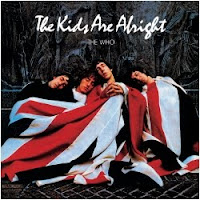This should be sort of fun...a look at some odds and ends I recently found before I moved, when I finally opened some drawers and closets containing boxes and items I had not disturbed for years..
I just moved out of my condominium after having lived there 16 years. I have occupied the home I share with Mark for just over a month, and I'm still putting things away and rearranging. Some of the things I came across have made me laugh, or just stare in smiling disbelief.
--My Betamax Machine: In the mid-1980's, my family jumped on the bandwagon and purchased one of the first pieces of equipment for in-home movie exhibition. The big name was the Sony Betamax, an impressive (for its time) metal machine with a popup slot on top in which you inserted a small videotape and pressed it down to start playing. Tapes were available for rent from video stores. This machine must have weighed over 50 pounds, and was trimmed in wood to match our console television set.
In just a few years, our Betamax had become obsolete in favor of the VHS format. Beta was supposed to have been better resolution, and the tapes were more compact, but VHS won out.
There is still debate as to why VHS won out. The reason I give credence to is the fact that Sony did not allow pornography on beta tapes, but the manufacturers of the VHS format did. Not that it matters now...I have hundreds of VHS tapes now in my collection, too!
It was a good dose of laughs and nostalgia when I found this behemoth of a machine wrapped in a large towel in my storage locker.
A Couple of Souvenir Movie Program Books Major movies at one time were released as "road-show" attractions. A film would play in one luxury theater in a city for several months, before being distributed to outlying suburbs. Sometimes tickets were sold in advance on a reserved-seat engagement, similar to a live play. And, like a theatrical play, souvenir program booklets were sold. I have two of them: "Oliver!" and "The Godfather Part II". These books functioned like DVD extras do now, with glossy, beautifully reproduced photos of the making of the film, with essays and anecdotes, as well as biographies of cast and crew. I found the "Oliver" booklet on line, but not "Godfather II", leading me to believe it is rare indeed. If anyone else has one or knows if one is available for sale on-line, let me know!

--An old photograph of me, my mother, and Cassie This was taken circa 1982. Cassie was our second Saint Bernard, not as large as Tippi, but just as lovable. I laughed when I saw myself in my Justin Bieber hairstyle. I was also struck by how much my eyes resemble my mother's. She was on the brink of years of emotional struggle at that point.... The porch is still the same, will never change...
A Family Tree...on My Father's Side: Before he died, my father's brother (my uncle Martin) began a family history. This he accomplished years before on-line searches. He was able to trace my paternal ancestry back to 1749 and Franc Juzef ... This is not my Italian side... and I know very little about my father's family, so this was a valuable find....
According to the document: "(Our) family came to the U.S. in 1885 from a small village located between Kartuzy and Danzig within the Kashubian Corridor or West Preussen, then Germany, now Poland."
Page 10 of the document lists my grandparents and my father and his 10 siblings. Only he and his youngest sister, my aunt who is a nun in a convent in Ft. Worth, survive.
My grandmother's name was Mary Wierzbanowski. She was born in 1884, and died in 1943 when my father was 15 years old.
My Grandfather was also Martin. That is my Father's middle name.
My sister and I are the last two names on the document.
~
A Kindergarten School Portrait This five-year-old is filled with hope and innocence. He has not changed too much since then...even before he lost his baby teeth, he had a gap in front, as he does today. He has the look of a kid who wanted to please, who wanted to be happy, and learned too early of the pain and disappointment of the world..until dogs, and some close friends and mentors, came into his life. Fortunately, after many fashion disasters, his current hairstylist saves him from embarrassment. Andy Warhol would have loved the double-image photo...


































